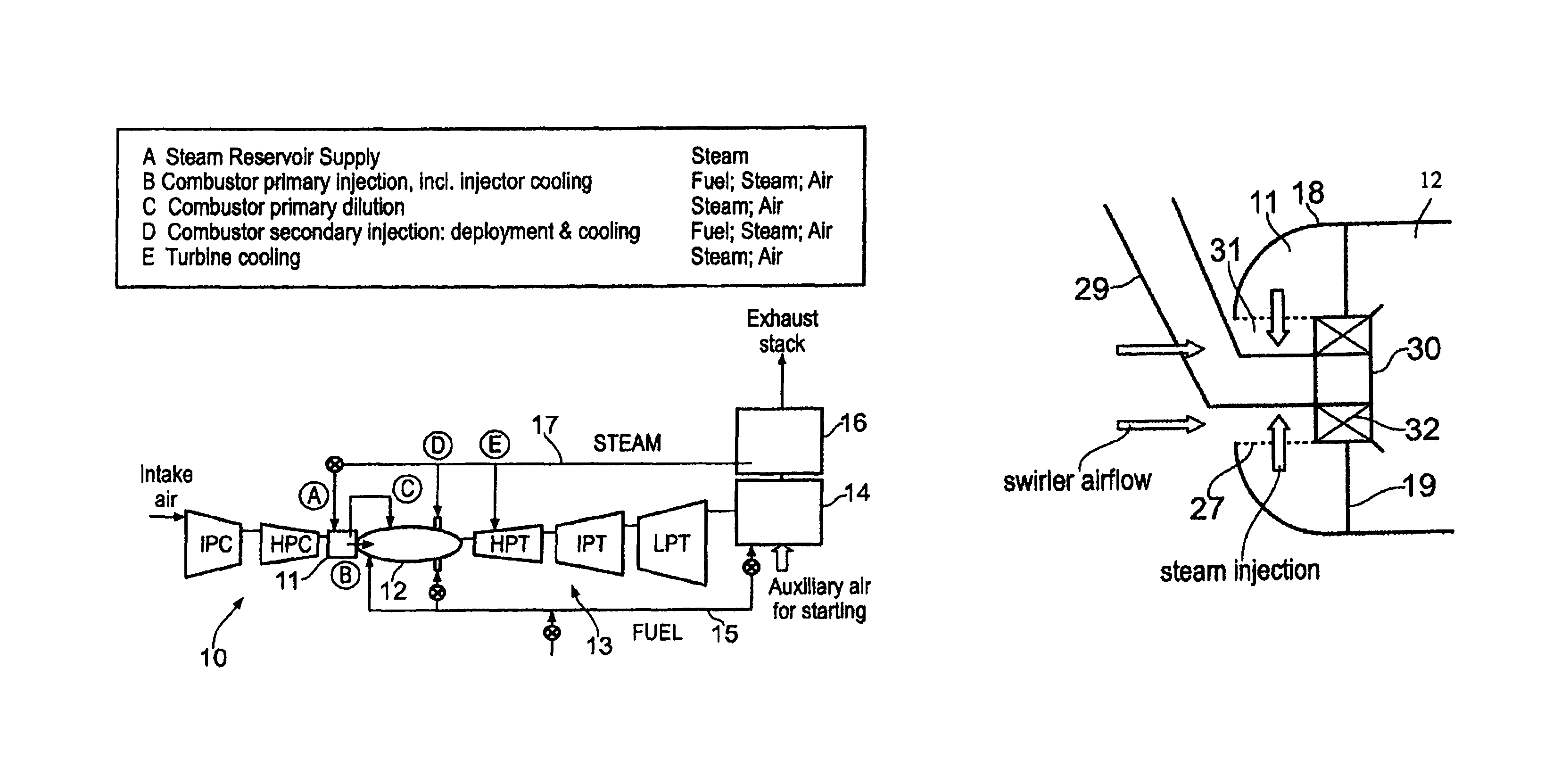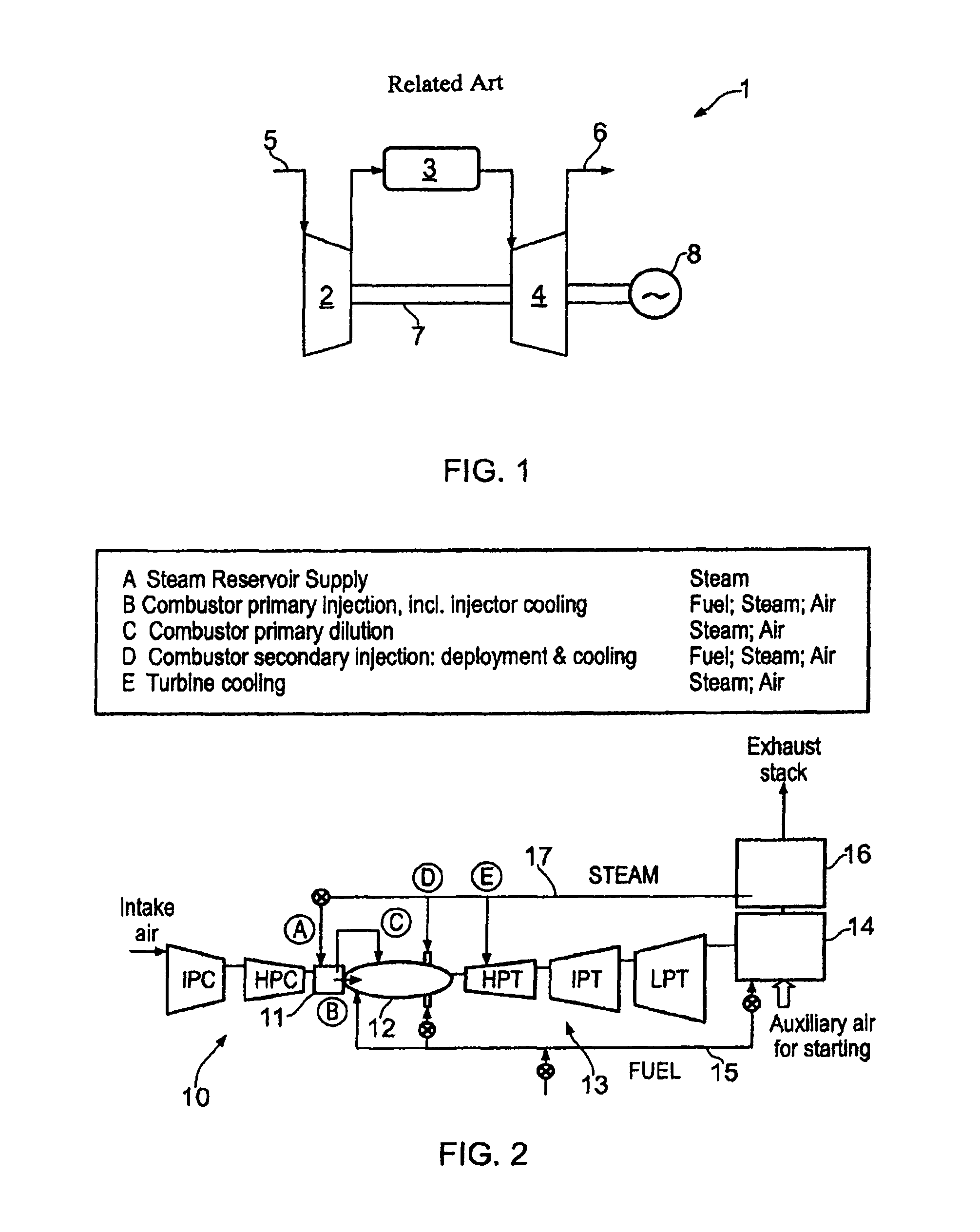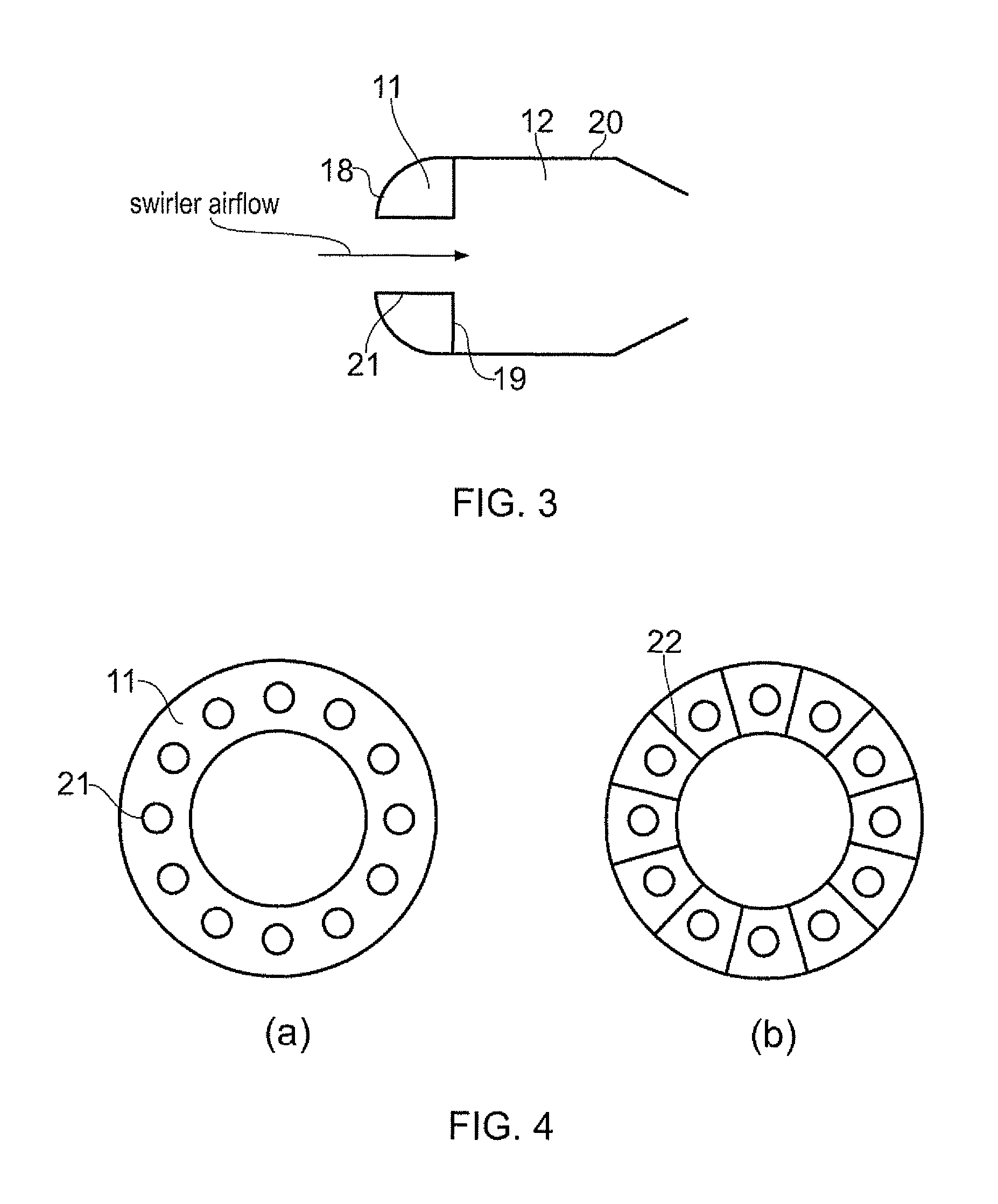Steam injected gas turbine engine
a gas turbine engine and steam injection technology, applied in the direction of machines/engines, mechanical equipment, lighting and heating apparatus, etc., can solve the problems of difficult control of steam placement to the conditions required for combustion and cooling, and achieve the effect of improving the flexibility of steam injection placemen
- Summary
- Abstract
- Description
- Claims
- Application Information
AI Technical Summary
Benefits of technology
Problems solved by technology
Method used
Image
Examples
Embodiment Construction
[0043]FIG. 2 shows schematically an industrial gas turbine engine according to the present invention, and indicates the main feed routes for steam and fuel. The engine comprises, in flow series through the engine: a compressor section 10 comprising an intermediate pressure compressor (IPC) and a high pressure compressor (HPC); combustor comprising a steam reservoir 11 and a combustion chamber 12; a turbine section 13 comprising a high pressure turbine (HPT), an intermediate pressure turbine (IPT) and a low pressure turbine (LPT); and an exhaust duct burner 14. The IPC and IPT are connected by a shaft, and the HPC and HPT are connected by another, coaxial, shaft. The LPT drives a generator (not shown). A fuel feed 15 supplies fuel to primary and secondary injection positions of the combustion chamber. The fuel feed also supplies fuel to the exhaust duct burner. Heat is extracted from the burner by a boiler 16 and used to generate steam, which is sent to a steam feed 17. Some of the s...
PUM
 Login to View More
Login to View More Abstract
Description
Claims
Application Information
 Login to View More
Login to View More - R&D
- Intellectual Property
- Life Sciences
- Materials
- Tech Scout
- Unparalleled Data Quality
- Higher Quality Content
- 60% Fewer Hallucinations
Browse by: Latest US Patents, China's latest patents, Technical Efficacy Thesaurus, Application Domain, Technology Topic, Popular Technical Reports.
© 2025 PatSnap. All rights reserved.Legal|Privacy policy|Modern Slavery Act Transparency Statement|Sitemap|About US| Contact US: help@patsnap.com



